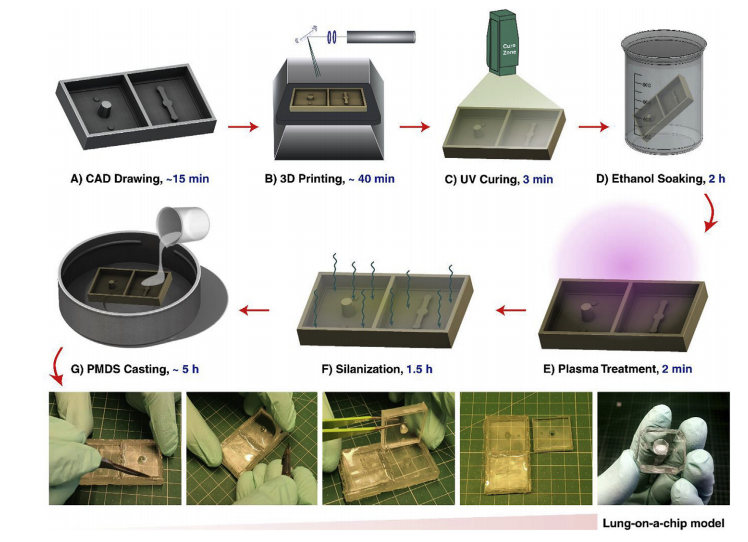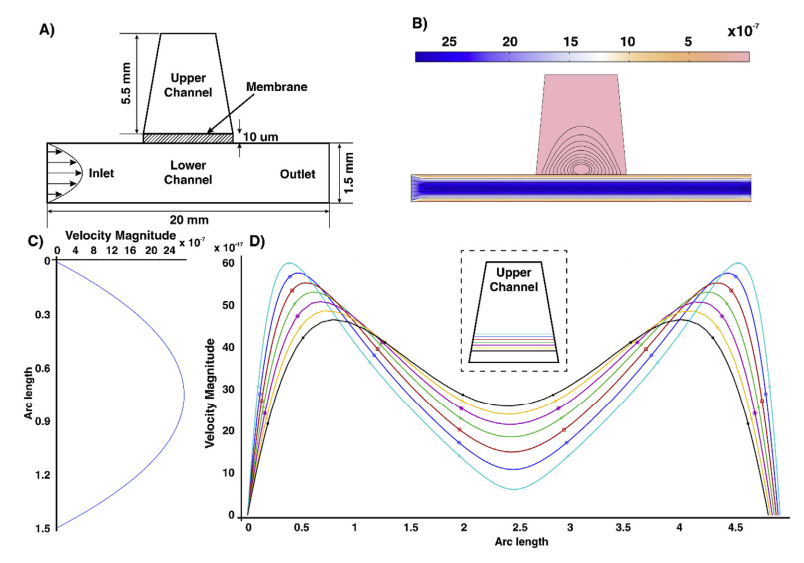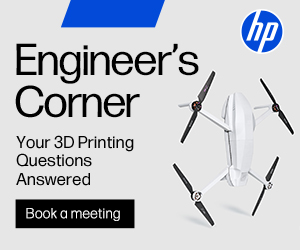3D Printed Molds Used for Lung-on-a-Chip Prototype
Scientists from Australia and Russia are continuing on the vast quest to sustain healthy cells for tissue engineering and ultimately, 3D printed organs that could completely change the landscape of medicine. Delving further into organ-specific microarchitectures, the researchers released their findings in the recently published ‘A rapidly prototyped lung-on-a-chip model using 3D-printed molds.’
The authors are quite accurate in pointing out the increasing use of 3D printing for molds, and in a variety of different research projects and applications, from improving foundry production to redesigning conventional techniques and experimenting with new materials. In this study, however, the clear focus is on tissue engineering and improved ways to prototype while creating organ-on-a-chip models.
Soft lithography techniques are one of the most common ways to create organ-on-a-chip devices; however, the researchers point out major drawbacks such as the number of hours required, issues with the fabrication of complex geometries, the need for a separate cleanroom and educated users, and resulting inefficiency overall in some cases.
“With further developments in 3D-printing, there has been a significant increase in the utilization of 3D-printed parts as molds to generate [polydimethylsiloxane] PDMS replicas,” said the researchers.
Currently, SLA and DLP 3D printing are preferred due to a host of benefits in microfluidics and other medical applications. In creating molds, users are able to enjoy greater flexibility while designing a variety of features and shapes that would be otherwise impossible. Many molds currently being fabricated through SLA and DLP, however, are not appropriate for PDMS casting because of residual materials left behind that could alter PDMS polymerization.
Temperature is sometimes another stumbling block during curing. Heat must be ‘carefully optimized’ to retain the quality of 3D printed molds, leaving the researchers to create a surface treatment process that will allow for the sustainability of cells. With an enhanced protocol, they devised a method for making quality molds quickly, and without any signs of cracking or other deterioration.
“This treatment process allows high-resolution repetitive PDMS casting using 3D printed molds. The fabricated chip was further optimized by testing different membranes and ECM coatings for cell growth and extended viability,” stated the researchers. “The chip allowed the lung epithelial cells to be cultured at an air-liquid interface under dynamic conditions; the transparency of PDMS enabled real-time cell visualization and chip monitoring.”

Microfluidic model of human Lung-on-a-chip design and fabrication: A) A conceptual schematic of the experimental setup showing the human respiratory system B) A cross-section of human airway tissue. C) 3D printer was used to fabricate the open well design of the chip model with upper and lower layers to recapitulate human lung. D) The top layer contains a central open well for cell seeding, and an inlet and an outlet for media in the lower channel. The lower layer includes a channel for media flow. The porous PC membrane is carefully placed and aligned between the two layers, where the cells attach and grow. E) Once the cells were confluent, the effects of CSE on the cells were analyzed.
Choosing the Calu-3 cell line for their lung-on-a-chip device, the researchers were able to show the versatility of the model as they evaluated CSE effects and began Budesonide treatment. Molds were printed on a MiiCraft Ultra 50 3D printer, after modeling in SolidWorks.
“To enable high-resolution printing of mold features, the print options were carefully tailored to each design. Smaller design features required a slice thickness of 10 μm and a curing time of 1 s per slice, where features were less fine, slice thicknesses of 30 and 50 μm were used,” explained the researchers. “Considering the size of the printed molds, a base layer was used to ensure the part adhered to the picker for the duration of the print. The curing time for the base layer was set to 24 s.”
They added an extra layer as a buffer and realized that to keep the PDMS from sticking, resin mold surface treatment was critical. The mold was washed, dried at high pressure, cured for three minutes, and then soaked in alcohol.

Protocol for the surface treatment of the 3D printed resin molds: A) CAD design of the desired mold using Solidworks. B) The finalized designs are printed using the 3D printer. C). The mold is then washed with IPA, followed by UV curing. D) and E). The mold is then dipped in ethanol before plasma treating. F) and G) Before casting PDMS, the mold is silanized. Once the PDMS is cured, it is carefully cut out from the molds to form two slabs. The PDMS slabs are then cleaned with alternative IPA and Ethanol washing before being plasma treated, aligned, and bonded carefully to make a complete lung-on-a-chip
The innovative open-well design was helpful for improved cell seeding, work with fluids, and collecting samples. The cells were also directly exposed to CSE and any drugs or nanoparticles.
“Multiple open well chambers can be interconnected to each other to conduct independent as well as parallel studies. This was first suggested by Blume et al. who developed a similar open well design compatible with commercially available Transwells to be interconnected. (Blume et al., 2015),” explained the researchers. “However, this is a complicated process compounded by the number of components comprising their chip design.”
The resulting lung-on-a-chip model offers improved maintenance, usability, and allows also for easier experimentation. Comprised of a large circular well, inlet, and outlets on either side, surface treatment is ‘vital’ for such a mold.

Simulations of fluid flow in the lung-on-a-chip model: A) Geometry and boundary conditions used for computational modeling. B) Velocity profile along the length of the microchannel. It is evident that the velocity distribution across the upper channel is small enough to not negatively impact attached cells. C) Velocity distribution along the length of the channel. It is shown that the velocity profile in lower channel has a parabolic profile. D) Velocity profile at the upper channel. The
order of velocity is small enough so that cells are not influenced by shear rate.
Cell functionality was tested through:
- Live and dead staining
- Mucus secretion
- Sodium fluorescein permeation
- Cell surface P-gp expression
One of the most important parts of the research, however, was being able to test cigarette smoke on the lung-on-a-chip models. Because smokers have displayed increased levels of IL-6 and IL- 8 in their bronchoalveolar lavage (BAL), the researchers investigated—finding that there were ‘significantly increased secretions’ of IL-6 (p < 0.01) and IL-8 (p < 0.05), actually indicating anti-inflammatory effects of the Budesonide treatment.
“The capability of our model to successfully replicate the effects of CSE and Budesonide makes it a suitable in vitro model for toxicological and inflammatory studies,” concluded the researchers.
“The model developed using 3D-printed molds was able to maintain excellent barrier integrity, expressed cell surface functional P-gp, and secretion of the mucus layer, providing a platform for permeability assays, transport mechanisms, and pulmonary drug delivery studies. Also, the ability to rapidly prototype these molds with little technical skills makes organ-on-a-chip modeling accessible to a broad group of researchers.”
What do you think of this news? Let us know your thoughts! Join the discussion of this and other 3D printing topics at 3DPrintBoard.com.
Subscribe to Our Email Newsletter
Stay up-to-date on all the latest news from the 3D printing industry and receive information and offers from third party vendors.
Print Services
Upload your 3D Models and get them printed quickly and efficiently.
You May Also Like
Stifel’s AM Forward Fund Launches, Looking for US Manufacturers to Invest In
The need for greater resiliency in the defense supply chain is real and urgent. One area the US government has been focusing on is building a faster and more sustainable...
3D Printing Financials: Xometry Cuts Losses, Grows Platform
Xometry (Nasdaq: XMTR) is entering 2025 with momentum. The company delivered record quarterly revenue and narrowed its losses, showing progress toward profitability. More importantly, for those watching the future of...
3D Spark Secures $2.2M to Tackle Manufacturing Bottlenecks
German startup 3D Spark has raised two million euros in a seed round. Swedish software investor Triplefair Partners led the round, with Fraunhofer Technologie-Transfer Fonds (FTTF) and Innovationsstarter Fonds Hamburg...
3D Printing Financials: Protolabs Reports 3D Printing Dip, But Metal 3D Orders Grow
Protolabs (NYSE: PRLB) kicked off 2025 with a mixed but steady performance. Revenue remained close to expectations, profits dipped slightly from last year, and the company was profitable despite ongoing...





























